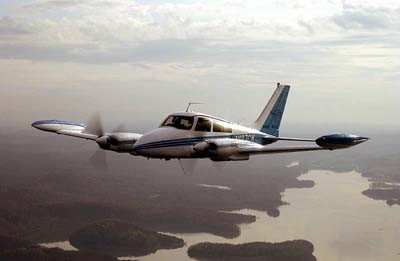Amount Awarded to The Family Of David Duncan Undisclosed
The family of David Duncan, who was fatally injured when the Cessna 310 he was flying went down following its annual inspection, has been awarded an undisclosed amount to be paid by the Tupelo, MS Airport Authority. The Daily Journal of Northeast Mississippi reports that state law caps such against government entities at $500,000.

According to the NTSBs' probable cause report from the accident, the airplane had just undergone an annual inspection, at which time the left engine’s number two cylinder was replaced. In order to facilitate the cylinder replacement, the B-nut attaching the fuel supply hose to the engine’s manifold valve was removed and reinstalled. A postmaintenance engine ground run was performed, and no discrepancies were noted.
The airplane was cleared to depart from runway 36 with an easterly departure. Witnesses observed the airplane roll down the runway, liftoff, and at an estimated altitude of 300 to 500 feet above the runway, about mid-field, witnesses observed the airplane turn to the left on a west heading and descend. Witnesses heard a loss of engine power just before the turn. The airplane impacted the adjacent main road, and all three of the landing gear separated. The airplane struck a vehicle and a tree before its nose section impacted the base of a 3-foot diameter tree in the front yard of a house and then came to a stop. Postaccident propeller examination revealed that both propellers were in a low pitch position; the right propeller impacted while operating at high power, and the left was operating with low power or was windmilling at time of impact.
The on-site wreckage examination found that the B-nut connecting the fuel supply hose to the manifold valve on top of the left engine had backed off about a quarter turn. The B-nut was tightened, and both engines were test run after the accident; no abnormalities that would have prevented normal operation were found. Both engines produced production-rated power. After completion of the left engine test run, the B-nut between the fuel supply hose and the manifold valve was set at finger-tight torque. A wire was attached to loosen the B-nut during the engine run, and a stop was in place to limit the rotation. The engine was started and set at full throttle and the B-nut was loosened to slightly over a quarter turn. When the B-nut was loosened, the engine immediately lost power. It is likely that the B-nut had been tightened sufficiently to maintain torque during the ground run; however, the vibration of extended engine operation during takeoff led the B-nut to back off, resulting in the loss of power in
the left engine.
From the position where the witnesses reported hearing the airplane lose engine power, about half the runway (or about 3,200 feet) remained. In addition, an open field was located past the departure end of that runway. However, the airplane turned left after the loss of engine power, which was contrary to the departure instructions and contrary to the safest option for an emergency landing (the remaining runway or the open field). Further, the propeller blades were in the low pitch position, indicating that the pilot didn’t perform the engine failure checklist, which stated that the propeller should be feathered. Thus, it is likely that the pilot was delayed in his reaction to the sudden loss of thrust from the left engine and could not maintain airspeed or straight ahead flight.
The National Transportation Safety Board determined the probable cause of this accident to be the pilot’s delayed reaction in performing the engine failure procedures and his failure to maintain adequate airspeed, which resulted in a loss of airplane control. Contributing to the accident was maintenance personnel’s improper torquing of the B-nut between the fuel supply hose and the manifold valve.
Duncan's daughters had filed the suit against the airport authority claiming negligence on the part of Tupelo Aviation Unlimited, the FBO at the airport.
(Cessna 310 pictured in file photo. Not accident airplane)
 ANN's Daily Aero-Term (04.24.24): Runway Lead-in Light System
ANN's Daily Aero-Term (04.24.24): Runway Lead-in Light System ANN's Daily Aero-Linx (04.24.24)
ANN's Daily Aero-Linx (04.24.24) Aero-FAQ: Dave Juwel's Aviation Marketing Stories -- ITBOA BNITBOB
Aero-FAQ: Dave Juwel's Aviation Marketing Stories -- ITBOA BNITBOB Classic Aero-TV: Best Seat in The House -- 'Inside' The AeroShell Aerobatic Team
Classic Aero-TV: Best Seat in The House -- 'Inside' The AeroShell Aerobatic Team Airborne Affordable Flyers 04.18.24: CarbonCub UL, Fisher, Affordable Flyer Expo
Airborne Affordable Flyers 04.18.24: CarbonCub UL, Fisher, Affordable Flyer Expo



